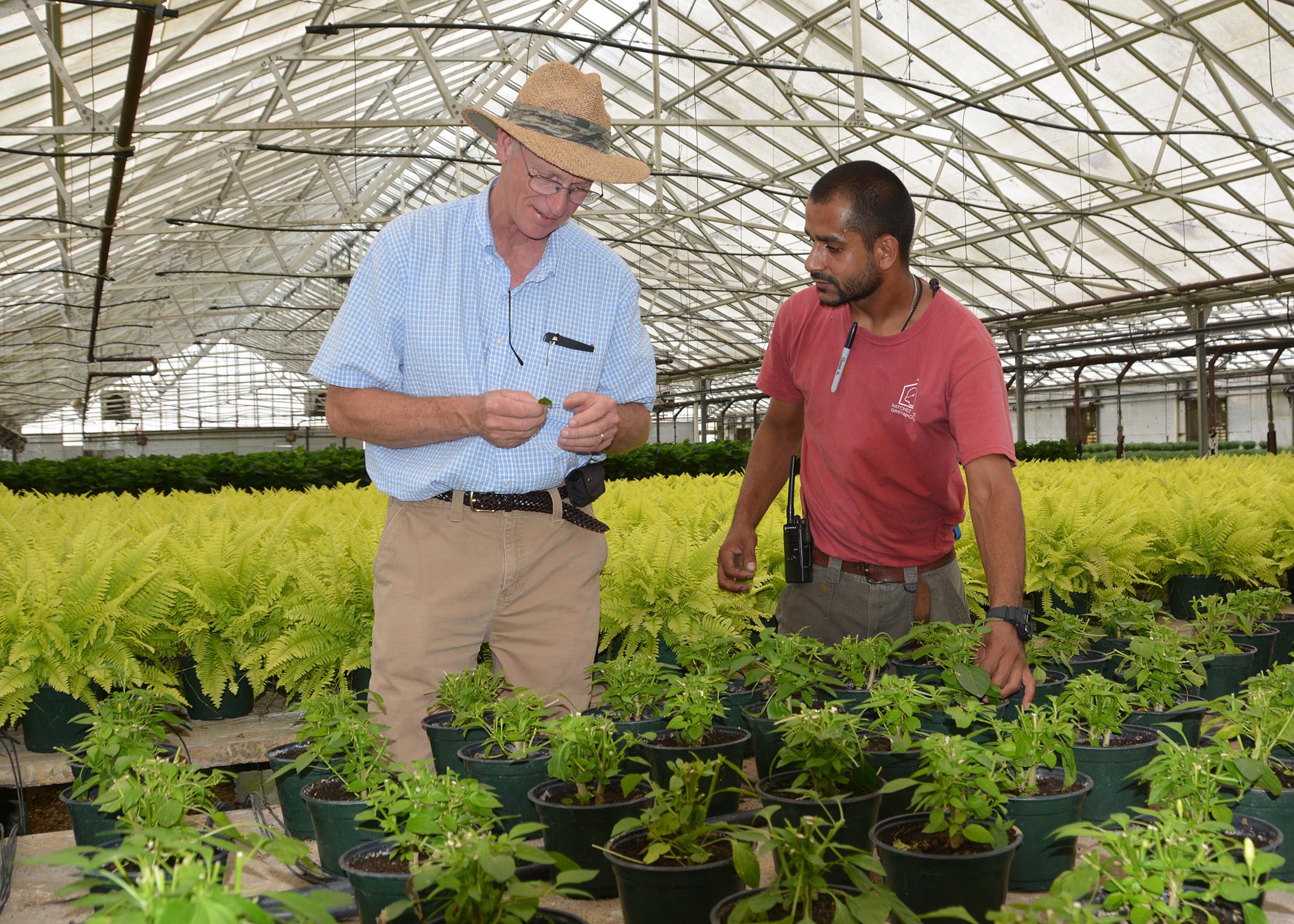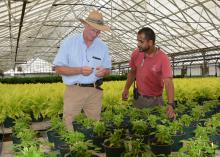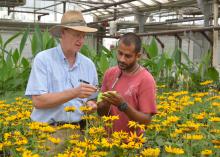Information Possibly Outdated
The information presented on this page was originally released on August 29, 2014. It may not be outdated, but please search our site for more current information. If you plan to quote or reference this information in a publication, please check with the Extension specialist or author before proceeding.
Beneficial insects make ideal greenhouse workers
KOSCIUSKO -- They don’t need paychecks, time cards or coffee breaks. They don’t even complain about the August heat in a Mississippi greenhouse.
Parasitic wasps and predatory mites are just a couple of the insect species growers can release to guard against damaging pests in greenhouses.
“Growers have several beneficial insects they can purchase for their greenhouses to reduce other insect populations that will damage retail plants,” said Blake Layton, entomologist with the Mississippi State University Extension Service. “This type of biocontrol may not be 100 percent effective, but it is well worth the effort.”
Layton has made regular trips to greenhouse nurseries around Mississippi to encourage more use of biocontrol. His efforts are supported through a grant from the U.S. Department of Agriculture’s National Institute of Food and Agriculture. He has worked with pests in gerbera daisies, cucumbers, poinsettias and many other plants.
Layton said insects develop a resistance to pesticides with repetitive chemical use.
“One goal is to buy some time between insecticide applications. Resistance develops quicker with frequent applications,” he said. “Use of predatory insects also protects workers from chemical exposure.”
Whiteflies, thrips, aphids, mealy bugs, leaf miners and scale insects are among the tiny pests that plague greenhouse plants.
“Insects in greenhouses are different from pests seen outdoors. They are typically much smaller than the species we find outside,” he said. “Biocontrol is the best way greenhouse pests are controlled.”
Nick Terkanian of the Natchez Trace Greenhouses in Kosciusko said he is a believer in biocontrol.
“I would love to make it where everything in the greenhouse is under biocontrol. It’s just God’s way of taking care of plants,” he said.
Terkanian is growing Red Missile peppers for the sole purpose of hosting swirski-mites, which will attack the larvae of whiteflies and thrips. He said whiteflies are among the biggest challenges in his greenhouses, especially on poinsettias.
Layton assists Terkanian with scouting needs, such as monitoring the numbers of whiteflies on poinsettias. Layton said the biocontrol is good, but an additional benefit comes from helping growers learn how to scout for insect numbers.
“Timing is critical. The host, or banker, plants need to be at the right maturity stage to provide an initial home for the insects, and then there needs to be enough food, such as whiteflies or thrips, to provide nourishment,” Layton said. “Greenhouse growers have a lot to learn to sustain biocontrol over a period of time, but the benefits of reducing insecticide use and reducing selection for insecticide resistance make this an attractive pest management option.”
Initially, Layton is using the grant money to order insects from a company in Minnesota, which has them shipped from the Netherlands for arrival within a few days.
“The goal of this grant is to plant a seed and inspire growers to adopt biocontrol measures in their greenhouses,” he said. “This is just an introduction to the process.”
Your Extension Experts
Related News
Pages
Related Publications
Pages
- « first
- ‹ previous
- 1
- 2
- 3





